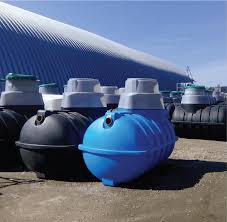Rotational molding can be a developing method employed for creating hollow plastic-type goods. It involves rotating a fungus around two perpendicular axes to disperse the plastic material substance evenly through the fungus. The result is a long lasting, high-high quality plastic material product or service with standard walls density – a stark contrast to standard producing approaches. When rotationally shaped plastics were created and constructed properly, they can last for years and add more artistic entice any product.
The entire process of Rotational Molding commences with the development of a mildew – a hollow cavity using the wanted model of the product. The fungus will be stuffed with plastic-type resin natural powder, typically produced from polyethylene (PE), which is amongst the most frequently used resources in rotational molding. Following, the mold is heated up, and although it’s still warm, it’s rotated on two perpendicular axes. The centrifugal force made with the rotation distributes the plastic-type substance evenly throughout the mildew.
One of many defining characteristics of your rotational molding approach is its versatility. Just about any shape or measurements of plastic product or service can be accomplished utilizing rotational molding. From sizeable tanks to modest health-related units, the procedure is ideal for creating products with complex designs or features that might be out of the question along with other plastic-type developing methods.
In terms of the caliber of the resulting plastic merchandise, rotational molding has a lot to provide. This process results in products with extremely standard wall surface fullness – a function that’s typically crucial for fill-having or tension-delicate apps. In addition, rotational molding can cause items with elaborate forms and undercuts – functions that increase their functionality and aesthetic attraction.
One of the primary advantages of rotational molding is that it permits the inclusion of artificial additives within the plastic-type fabric during the developing method. Additives like UV stabilizers, antimicrobials or flames retardants can boost the qualities in the finished plastic-type merchandise, making these items stronger and lengthy-sustained. Additionally, because the plastic components employed in rotational molding are comparatively cheap, the resulting items are frequently relatively inexpensive as well.
In short:
Rotational molding might not be as popular as other plastic developing operations like injection molding, but that doesn’t imply it’s any much less valuable. When rotational molding is commonly used to generate plastic material products, the outcome is really a powerful, tough, great-quality product which may last for many years. From sizeable tanks to modest healthcare gadgets, the flexibility of the procedure helps to ensure that rotational molding could be used to produce nearly every product. With the ability to consist of chemicals within the plastic fabric in the manufacturing method, rotational shaped goods may also have enhanced attributes and durability. If you’re looking for a manufacturing procedure to generate top quality plastic merchandise, have a shut look at rotational molding.


